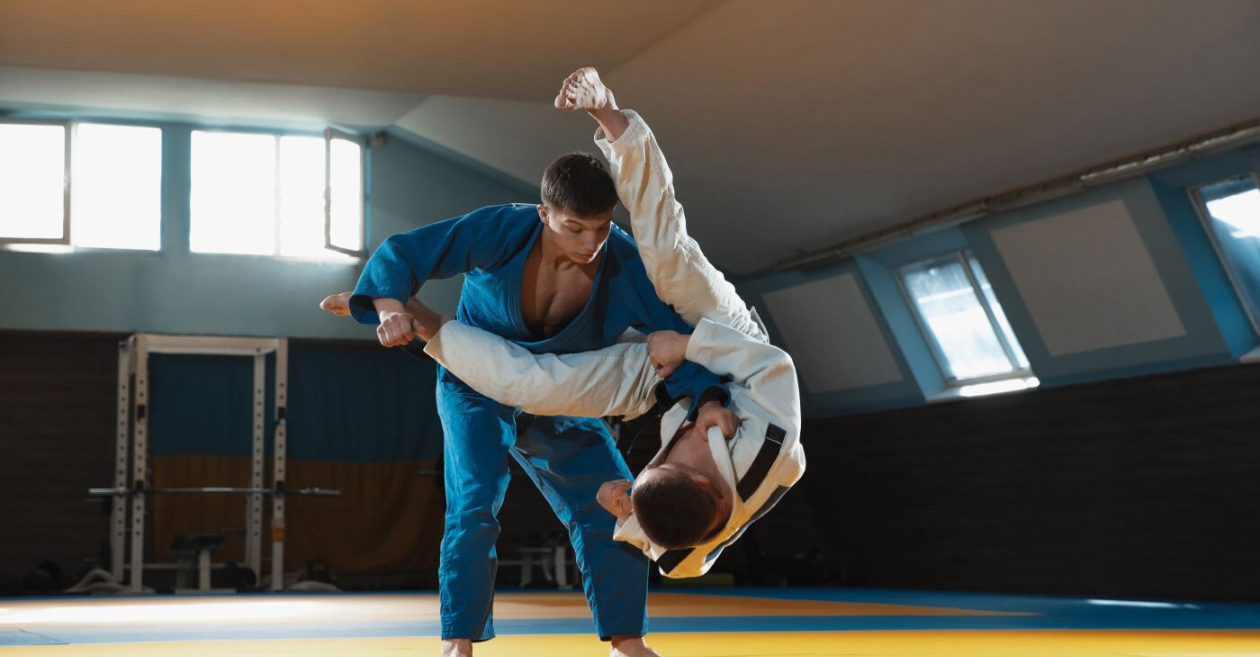


In the electrifying world of Mixed Martial Arts (MMA), the amalgamation of various martial arts styles creates a spectacle that transcends traditional boundaries. From powerful punches to intricate grappling techniques, MMA is a dynamic blend of diverse combat disciplines. Let's embark on a journey to unravel the multitude of martial arts that converge in the explosive arena of MMA.
People Also Read: What sector is AMD in
MMA, often referred to as the "ultimate proving ground," incorporates a plethora of martial arts styles. It serves as a platform where fighters showcase their proficiency in striking, grappling, and everything in between. The primary disciplines that contribute to this martial arts melting pot include:
Muay Thai: Known as the "Art of Eight Limbs," Muay Thai brings devastating kicks, elbows, knees, and clinch work to the MMA landscape.
Brazilian Jiu-Jitsu (BJJ): Renowned for its ground game, BJJ focuses on submissions and positional control, providing fighters with a crucial toolkit for grappling scenarios.
Boxing: The sweet science of boxing plays a pivotal role in MMA, with its emphasis on footwork, head movement, and powerful punches.
Wrestling: Wrestlers bring their expertise in takedowns, control, and ground-and-pound, showcasing the importance of dominant positioning.
Within the striking domain of MMA, various martial arts contribute to the diverse repertoire of fighters. Let's break down some key striking styles:
Karate: Known for its explosive and precise strikes, Karate has found its place in MMA, influencing fighters with its dynamic kicks and fast hand techniques.
Taekwondo: The art of high, flashy kicks, Taekwondo practitioners bring a unique flair to MMA, showcasing their agility and acrobatic kicks.
Kickboxing: As a standalone sport, kickboxing has evolved to become a foundational element in MMA, offering a versatile range of striking techniques.
Grappling is an indispensable aspect of MMA, and several martial arts specialize in controlling and submitting opponents on the ground:
Judo: With its focus on throws and takedowns, judo practitioners leverage their expertise to dictate the pace of the fight.
Sambo: Hailing from Russia, Sambo combines elements of judo and wrestling, providing fighters with a well-rounded skill set for ground control.
Catch Wrestling: This hybrid grappling style emphasizes submissions and positional control, blending seamlessly with other ground arts in MMA.
| Fighter | Dominant Discipline |
| Anderson Silva | Muay Thai, BJJ |
| Georges St-Pierre | Wrestling, Karate |
| Demian Maia | BJJ |
| Joanna Jędrzejczyk | Muay Thai |
| Khabib Nurmagomedov | Sambo, Wrestling |
In the dynamic world of MMA, the convergence of numerous martial arts styles enriches the sport, creating a captivating tapestry of combat techniques. From the stand-up prowess of Muay Thai to the ground control of Brazilian Jiu-Jitsu, MMA is a true reflection of the evolution and fusion of martial arts. As the sport continues to evolve, the question of how many martial arts are there in MMA remains open-ended, promising exciting developments on the horizon. The Octagon is a canvas where the artistry of diverse combat styles paints a masterpiece, captivating audiences worldwide.
MMA, or Mixed Martial Arts, stands out for its comprehensive approach, incorporating various martial arts disciplines into a single sport. Unlike traditional martial arts, which may focus on specific techniques, MMA encourages fighters to be well-versed in striking, grappling, and submissions.
MMA is a melting pot of martial arts, with fighters often drawing from a wide range of disciplines. Commonly featured martial arts include Muay Thai, Brazilian Jiu-Jitsu, boxing, wrestling, judo, and more. The diversity of styles adds excitement and unpredictability to each bout.
While fighters often have a base discipline they excel in, successful MMA competitors are well-rounded and proficient in multiple martial arts. Specializing in just one discipline can leave a fighter vulnerable in other aspects of the game, making versatility a key component of success in the sport.
Successful MMA fighters seamlessly transition between striking and grappling based on the flow of the fight. For instance, a fighter with a striking background may use their skills to keep the fight standing, while a grappler might aim to take the fight to the ground. The ability to adapt and switch between styles is a hallmark of a skilled MMA athlete.
Yes, many MMA fighters are recognized for their proficiency in a particular martial art. For example, Anderson Silva is celebrated for his exceptional Muay Thai and Brazilian Jiu-Jitsu skills, while Georges St-Pierre showcased the effectiveness of wrestling and karate in his dominant career. However, the best MMA fighters typically blend various disciplines to create their unique fighting style.

Let's dive into the exciting life of

Shakur Stevenson isn't just a name; h

Let's talk about Herb Baumeister, a g

Let's meet Sabrina Ionescu, the baske
Trash to treasure: How Google thinks
Spring Fashion Show at the University
Matter of Impact: April updates from
Android Enterprise security delivers
We are not gonna make spamming
Copyright By@TheWebTrends - 2023
BACK TO TOP